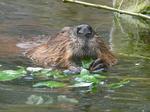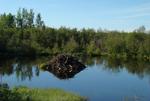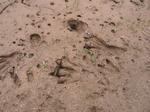| Home | About BFIS | Species List | Risk Analysis | Harmonia⁺ | Resources | Outputs | Mailing List | Registry |
| Contact us | Login | | ||||||
 |

©
Andi Kahle
  
©
Patrick Dockens
 Naturalization in Belgium Naturalization in Belgium
 Invasiveness Invasiveness
More on invasiveness: As for the European beaver, the Canadian beaver lives in riparian zones, rivers and lakes, usually included in a forest matrix providing food and building material. Lodges may be completely surrounded by water or built on the banks of streams and lakes. It has a greater ecological flexibility, survives better under severe climatic conditions and adapt more easily to substitute foods than its Eurasian counterpart.
 Distribution in Belgium Distribution in Belgium
Established populations

 Impacts on Species Impacts on Species
 Impacts on Ecosystems Impacts on Ecosystems
More on impacts: Castor canadensis is likely to outcompete the native Castor fiber due to higher reproductive output. It is a more active builder of dams and lodges than C. fiber and regulates hydrological regimes of water bodies better than C. fiber, leading to a slightly higher impact on ecosystems. The two species do not hybridise due to a difference in chromosome numbers.
References:
Danilov, P. (1995)
Canadian and European beavers in Russian northwest.
Proceedings of the third Nordic beaver symposium, Finnish Game and Fisheries Institute, pp. 10-16.
Danilov, P.I. & Kan'shiev, V.Y. (1983)
The state of populations and ecological characteristics of European (Castor fiber L.) and Canadian (Castor canadensis K.) beavers in the northwestern USSR.
Acta Zoologica Fennica 174: 95-97.
Dewas, M., Herr, J., Schley, L., Angst, C., Manet, B., Landry, P. & Catusse, M. (2011)
Recovery and status of native and introduced beavers
Castor fiber and Castor canadensis in France and
neighbouring countries.
 Mammal Review
Halley, D.J. & Rosell, F. (2002)
The beaver's reconquest of Eurasia: status, population development and management of a conservation success.
Mammal Review 32(3): 153-178.
Hollander, H., van Duinen, G.A., Branquart, E., de Hoop, L, de Hullu, P.C., Matthews, J., van der Velde;, G. & Leuven, R.S.E.W. (2017)
Reports Environmental Science 528, Dpt Environmental Science, Radboud University.
Hollander, HD, van Duinen, GA, Branquart, E, Hoop, L D, De Hullu, PC, Matthews, J, van der Velde, G & Leuven, RSEW (2017)
Risk assessment of the alien North American beaver (Castor canadensis).
Netherlands Centre of Expertise for Exotic Species (NEC-E),
Bargerveen Foundation, Dutch Mammal Society, Service Public de Wallonie and Radboud University (Institute for Water and Wetland Research, Department of Environmental Science).
ISSG (Invasive Species Specialist Group) (2006)
Online fact sheets
Global Invasive Species Database, IUCN.
Nolet, B.A. & Rosell, F. (1998)
Comeback of the beaver Castor fiber: an overview of old and new conservation problems.
Biological Conservation 83: 165-173.
Nummi, P. (2007)
From online database of the North European and Baltic network on invasive alien species (NOBANIS).
Rosell, F. & Sun, L. (1999)
Use of anal gland secretion to distinguish the two beaver species Castor canadensis and C. fiber.
Wildl. Biol. 5: 119-123.
|
 |
 |





